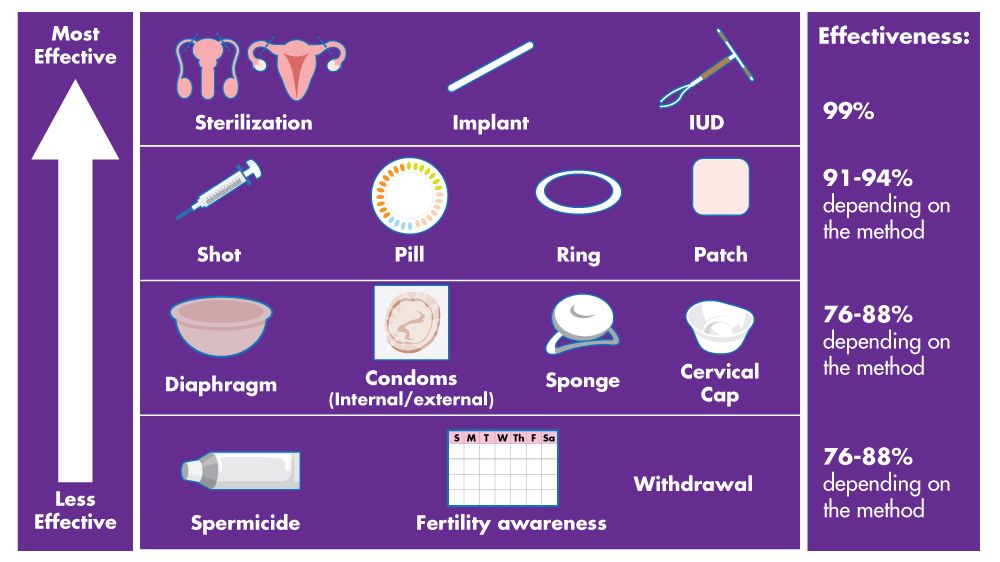
Exploring Different Contraceptive Methods and Their Effectiveness
Introduction
Contraception refers to the methods or devices used to prevent pregnancy. With the advancement of medical science, there are various contraceptive methods available to individuals, offering them the ability to choose the most suitable option for their needs. In this article, we will explore different contraceptive methods and their effectiveness in preventing pregnancy.
Barrier Methods
Condoms
Condoms are one of the most commonly used barrier methods of contraception. They are widely available, affordable, and easy to use. Condoms act as a physical barrier, preventing sperm from reaching the egg. When used correctly, condoms are highly effective in preventing unwanted pregnancies, with a success rate of around 98%.
Diaphragms
Diaphragms are another barrier method of contraception. They are shallow, dome-shaped devices made of silicone which are inserted into the vagina to cover the cervix. Diaphragms work by blocking the sperm’s path to the uterus. When used correctly, diaphragms have an effectiveness rate of around 88%.
Hormonal Methods
Combined Oral Contraceptives
Combined oral contraceptives, often referred to as “the pill,” contain synthetic hormones that prevent ovulation. These hormones also thicken cervical mucus, making it difficult for sperm to reach the egg. When used consistently and correctly, oral contraceptives have a success rate of around 99%.
Implants
Implants are small, flexible rods that are inserted under the skin of the upper arm. They release a steady dose of synthetic hormones, which suppress ovulation and thicken cervical mucus. Implants are highly effective, with a success rate of over 99%, and their contraceptive effects last for several years.
Intrauterine Devices (IUDs)
Copper IUDs
Copper IUDs are small, T-shaped devices that are inserted into the uterus. They work by releasing copper, which produces an environment that is toxic to sperm, thus preventing fertilization. Copper IUDs have a high effectiveness rate, with over 99% success in preventing pregnancy. Additionally, they are durable and can provide long-term protection for up to 10 years.
Hormonal IUDs
Hormonal IUDs, such as Mirena or Kyleena, also require insertion into the uterus. These devices release synthetic hormones that thicken cervical mucus and inhibit ovulation. Hormonal IUDs have a success rate of over 99% and can provide effective contraception for up to 5 years.
Sterilization
Tubal Ligation/Vasectomy
Tubal ligation is a surgical procedure in which a woman’s fallopian tubes are sealed or obstructed, preventing the sperm from reaching the egg. This procedure is considered permanent and is highly effective, with a success rate of nearly 100%. On the other hand, vasectomy is a similar procedure performed on men, in which the vas deferens is cut or sealed to prevent sperm from entering the semen. Vasectomy is also highly effective and has a success rate of nearly 100%.
Conclusion
With the wide range of contraceptive methods available, individuals have the freedom to choose the option that best suits their needs and preferences. From barrier methods like condoms and diaphragms to hormonal methods like oral contraceptives and implants, and even permanent options like tubal ligation and vasectomy, there are various effective choices to prevent unintended pregnancies. It is important to consult with healthcare professionals to determine the most suitable contraceptive method for each individual, taking into account factors such as overall health, lifestyle, and future family planning goals.

